Installing an inverter in your RV might seem filled with technical complexities, but it’s simpler than you might think. Investing in an inverter can significantly enhance your RV life, providing you with the comfort of using your appliances flawlessly on the go. Our guide breaks down the essentials into easy-to-understand steps, ensuring you make informed decisions and carry out a hassle-free RV inverter installation. From selecting the right inverter to understanding its functions, we’ve got you covered.
With detailed, step-by-step instructions, our guide ensures that installing an RV inverter becomes an achievable project for you. We discuss the benefits of taking a DIY approach, including cost savings and the satisfaction of customizing the installation to your needs. So, gear up to explore how you can power up your recreational vehicle for an enhanced on-the-road lifestyle. Get ready to dive into the next section for insightful and practical advice on RV inverter installation.
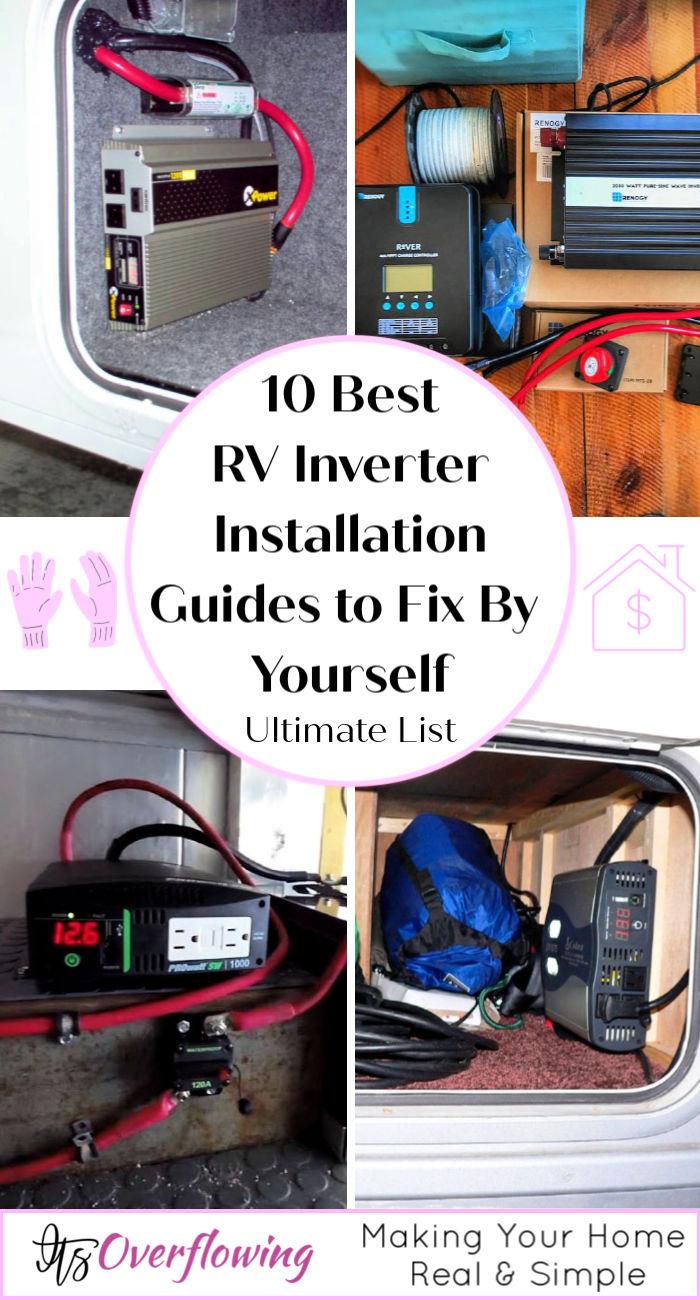
What Does an Inverter Do in an RV?
In an RV, an inverter plays a crucial role in enhancing your on-the-road lifestyle by converting power types to run your appliances smoothly. Let’s break down its functions in a simple, easy-to-understand manner:
- Converts Power: The primary job of an inverter is to convert 12V DC power from your RV’s batteries into 120V AC power. This is the same type of power you get from home outlets, making it suitable for your everyday appliances.
- Enables Appliance Use: Thanks to the inverter, you can use essential and comfort appliances like laptops, coffee makers, microwaves, and TVs without needing a direct connection to grid electricity or running a noisy generator.
- Power Management: Modern inverters often come with power management features. They can monitor battery levels, ensuring you don’t drain your batteries too much, thus preventing potential damage.
- Emergency Power: When you cannot connect to a power source, the inverter ensures you still have access to electricity, making your RV self-sufficient and comfortable, even off-grid.
- Efficiency and Quiet Operation: Inverters operate quietly, contrasting with generators that can be loud. This means you can enjoy electricity without the noise, especially during the night or in peaceful surroundings.
Remember, regular maintenance and proper installation are key for optimal use and longevity of your inverter. Choose the right size and type for your needs, and ensure it’s correctly installed to enjoy a seamless power experience in your RV.
Why Install an RV Inverter Yourself?
Installing an RV inverter on your own can seem daunting, but it’s a task that comes with several advantages. Here’s why taking the DIY approach to inverter installation can be beneficial:
- Cost Savings: Professional installations come with labor costs. Doing it yourself can save money, which can be used for other RV upgrades or travel expenses.
- Customization: You know your power needs best. By installing the inverter yourself, you can tailor the setup to suit your specific requirements, from the inverter location to the wiring paths.
- Learning Experience: DIY projects offer a chance to expand your knowledge and skills. You’ll learn more about your RV’s electrical system, which can be helpful for troubleshooting issues in the future.
- Self-Sufficiency: Being able to handle installations and repairs by yourself means you won’t be left stranded or reliant on others when traveling off the beaten path.
- Satisfaction: There’s a sense of pride and accomplishment that comes with completing a DIY project. It can enhance your overall RV experience, knowing you’ve personally improved your home on wheels.
Remember, while it’s rewarding, it’s crucial to prioritize safety. Ensure you have the right tools and follow the guides carefully to avoid any mishaps. Happy installing!
How to Choose the Right RV Inverter
Selecting the right RV inverter is crucial for enhancing your on-the-road lifestyle. An inverter converts the 12V DC power from your RV’s batteries into 120V AC power, enabling you to use household appliances and electronic devices without a direct connection to grid power. Here’s a straightforward guide to help you make an informed decision.
Understand Your Power Needs
First, consider what appliances you plan to run on your inverter. Common devices include laptops, coffee makers, microwaves, and TVs. Calculate the total wattage of these devices to understand the power output you need from an inverter. Remember, it’s always better to have a little extra capacity rather than not enough.
Choosing Between Modified Sine Wave and Pure Sine Wave
Modified Sine Wave (MSW) Inverters are more affordable and suitable for simple appliances like heaters and lights. However, they might cause issues with more sensitive electronics or appliances.
Pure Sine Wave (PSW) Inverters, on the other hand, replicate the power you get at home. They’re ideal for running sensitive electronics such as laptops and medical equipment. Although they come with a higher price tag, they offer broader compatibility and efficiency.
Size Matters
The size of the inverter, measured in watts, should match or exceed your calculated power needs. If your total appliance wattage adds up to 1000 watts, consider an inverter of at least 1200 watts to accommodate any additional power needs or future appliance additions. This extra headroom ensures your inverter won’t be constantly running at its maximum capacity, which can extend its lifespan.
Installation Location
The ideal location for your inverter is near the batteries to minimize voltage drop, yet in a spot with good ventilation to avoid overheating. Ensure the chosen location is also accessible for maintenance or troubleshooting.
Safety Features
Look for inverters with built-in safety features such as overvoltage, undervoltage, and overtemperature protection. These can prevent damage to your inverter and connected devices. A built-in automatic transfer switch is also beneficial for seamlessly switching between inverter power and shore power.
Price and Warranty
Balance your budget with the features and capacity you need. Don’t compromise on essential features for a lower price, as this could lead to inadequate power supply or damage to your devices. Additionally, a good warranty can provide peace of mind, ensuring support and coverage for any manufacturing defects.
User Reviews and Recommendations
Before making your final decision, read user reviews and seek recommendations from other RV owners. Their experiences can provide valuable insights into the reliability and performance of different inverters.
By considering your power needs, choosing the correct type of inverter, ensuring it has the right size and safety features, and doing your research, you can find the perfect inverter to enhance your RV lifestyle. In the next section, we will provide a step-by-step guide to help you install and set up your chosen inverter for optimal performance.
How to Install an RV Inverter: A Step-by-Step Guide
Installing an RV inverter by yourself can seem intimidating at first, but with the right guidance, it’s a task you can undertake to enhance your RV living experience. Inverters are essential for converting your RV’s battery power (DC power) into usable AC power, allowing you to run household appliances off-grid. Let’s walk through the process in an easy-to-understand manner, ensuring you can tackle this project confidently.
Understand Your Power Needs
Before you dive into the installation process, it’s crucial to assess your power requirements. Consider the appliances you plan to run and their power consumption. This step helps in selecting the appropriate size and type of inverter for your RV.
Selecting the Right Inverter
- Type: Choose between a Modified Sine Wave (MSW) and a Pure Sine Wave (PSW) inverter. PSW inverters are generally better for sensitive electronics.
- Size: Based on your power needs, select an inverter with enough wattage. It’s wise to get an inverter slightly larger than your calculated needs for additional headroom.
Tools and Materials Needed
Gather all necessary tools and materials before starting the installation. You’ll need:
- Your chosen RV inverter
- Appropriate gauge wiring and cables
- Tools for cutting and stripping wire
- Screwdrivers and wrenches
- A drill (if mounting is required)
- Safety equipment (gloves, goggles)
Installation Steps
Choose a Location
- Close to Batteries: Install the inverter as close to your RV’s batteries as possible to minimize voltage drop.
- Ventilated Area: Ensure the location is well-ventilated to prevent overheating.
Secure the Inverter
- Mounting: Use screws or mounting brackets to securely fasten the inverter in its chosen location.
Wiring
- Battery Connection: Connect the inverter’s positive cable to the RV battery’s positive terminal, and the negative cable to the negative terminal. Ensure connections are tight and secure.
- Grounding: Properly ground the inverter to prevent electrical shocks. Connect the grounding cable from the inverter to your RV’s chassis or a grounding point.
Safety Checks and Testing
- Double-check Connections: Ensure all cables are correctly and securely connected.
- Test the Inverter: Turn on the inverter and plug in a small appliance to test the setup. If everything works as expected, your installation is successful.
Installing an RV inverter by yourself is a rewarding project that can save you money and enhance your off-grid living experience. Always prioritize safety by wearing protective gear and ensuring all electrical connections are secure.
If you encounter any issues or feel unsure about a step, don’t hesitate to consult a professional. In the next section, we will provide some troubleshooting tips to help you address any potential issues with your RV inverter. Enjoy the freedom and convenience your newly installed RV inverter brings to your travels.
Troubleshooting Your RV Inverter Installation
Encountering issues with your RV inverter after installation can be frustrating. Here’s a troubleshooting guide to help you identify and solve common problems efficiently. Remember, safety first: always disconnect power before examining your inverter.
No Power Output
- Check Connections: Ensure all cables are securely attached to the correct terminals.
- Inspect Fuse/Breaker: Look for a blown fuse or tripped circuit breaker and replace or reset as necessary.
- Battery Voltage: Verify the battery is fully charged and providing sufficient voltage.
Low Power Output
- Overload: Reduce the load by disconnecting some appliances.
- Battery Condition: Check if the battery needs charging or replacement.
- Cable Size: Confirm that cable size is appropriate for the inverter’s power requirements.
Inverter Shuts Off Randomly
- Overheating: Ensure the inverter is in a well-ventilated area and not covered by objects.
- Power Surge: Disconnect devices that may cause a power surge exceeding the inverter’s capacity.
- Low Battery: Charge your battery; low voltage can cause the inverter to shut off.
Buzzing or Strange Noises
- Loose Parts: Make sure all internal and external components are tight and secure.
- Fan Blockage: Check the inverter’s fan for any obstructions or debris.
Error Codes
- Refer to Manual: Look up any error codes in your inverter’s manual for specific troubleshooting tips.
If these steps don’t resolve your issue, consulting the manufacturer’s support or a professional may be necessary. Remember, it’s crucial to address problems early to prevent damage to your inverter or RV’s electrical system.
In the next section, we will address some frequently asked questions (FAQs) to help troubleshoot any issues that may arise with your RV inverter.
FAQs on RV Inverter Installation
Discover essential tips and answers with our RV Inverter Installation FAQ guide. Get expert advice for seamless power management on the road.
What is an RV inverter and why do I need one?
An RV inverter converts the DC power from your RV batteries to AC power, allowing you to use household appliances and electronic devices in your RV without needing a direct connection to grid power.
How do I choose the right size inverter for my RV?
To choose the right size inverter for your RV, calculate the total wattage of the devices you plan to power simultaneously. Then, select an inverter with a wattage rating that meets or exceeds this total. It’s often recommended to add a 20-30% buffer to the calculated wattage for additional headroom.
Can I install an RV inverter by myself?
Yes, you can install an RV inverter by yourself. With basic electrical knowledge, the right tools, and by carefully following the installation guides or tutorials, many RV owners successfully undertake this DIY project.
What tools and materials do I need for RV inverter installation?
You’ll need:
- The RV inverter
- Appropriate gauge wiring and cables
- Wire cutters and strippers
- Screwdrivers and wrenches
- A drill (for mounting)
- Safety equipment (gloves, goggles)
Where should I install the inverter in my RV?
The inverter should be installed as close to the batteries as possible to minimize voltage drop, in a well-ventilated area to avoid overheating, and securely mounted to prevent movement during travel.
Do I need to ground my RV inverter?
Yes, grounding your RV inverter is essential for safety. Connect a grounding cable from the inverter to your RV’s chassis or a designated grounding point to prevent electrical shocks.
How do I connect the inverter to the RV battery?
Connect the inverter’s positive cable to the RV battery’s positive terminal and the negative cable to the negative terminal. Ensure connections are tight and secure.
What safety precautions should I take when installing an RV inverter?
- Always disconnect the RV battery before starting the installation to prevent electric shocks.
- Wear protective gear, such as gloves and safety goggles.
- Double-check all connections are secure to prevent short circuits or fires.
- Consult a professional if you’re unsure about any part of the installation process.
Can I run all my RV appliances through the inverter?
You can run many appliances through an RV inverter, but the inverter’s capacity and the appliances’ power requirements must be considered. High-power devices like air conditioners may exceed the inverter’s capability or drain the batteries quickly.
How do I maintain my RV inverter?
Maintain your RV inverter by regularly checking connections for tightness and corrosion, keeping the inverter clean and well-ventilated, and monitoring battery levels to avoid deep discharges. Regular maintenance ensures longevity and reliability.
By understanding these basics and following a guide suited to your needs and RV setup, installing an RV inverter can be a rewarding project that enhances your travel experience.
10 Easy RV Inverter Installation Guides
Discover 10 simple RV inverter installation guides to fix issues yourself. Save time & money with our easy-to-follow DIY tips for all RV owners.
1. Installing an Inverter in Your RV
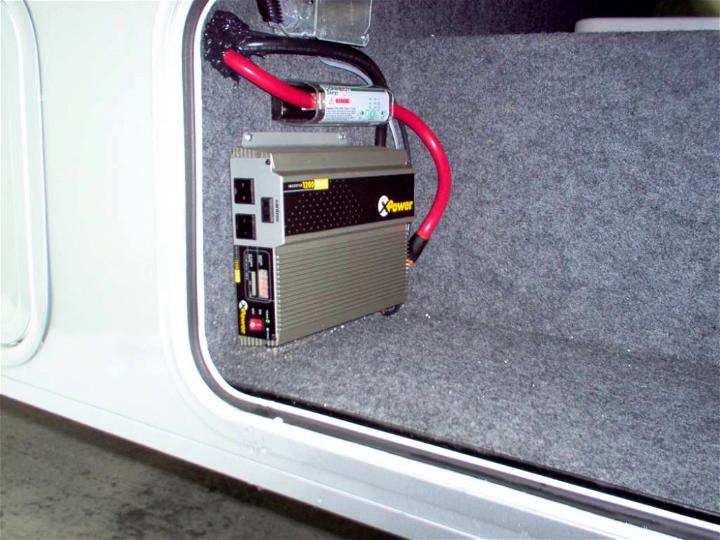
Installing an inverter in your RV can transform your travel experiences by allowing you to power appliances like TVs and coffee makers without needing to run a generator constantly. Our guide simplifies the process, offering step-by-step instructions on selecting the right components, mounting the inverter, wiring transfer switches, and testing the system. It’s an instructive and helpful read, ideal for RV owners keen on enhancing their vehicle’s autonomy. With careful planning and precise installation, you can enjoy all the comforts of home on the road, quietly and efficiently. Rv How To
2. Install Box Truck Camper Inverter and RV Battery
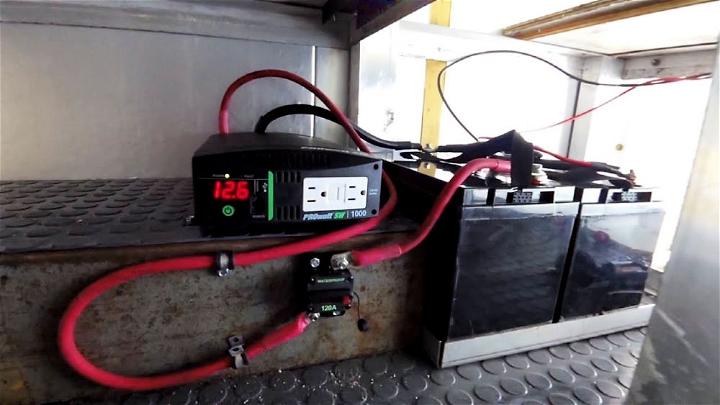
Join the adventure of converting a box truck into a custom camper with the latest vlog from JYDOG on YouTube. In Vlog 35, the focus is on the crucial task of installing a pair of 100AH batteries alongside a robust 1000 watt pure sine wave inverter. This setup is a game-changer for anyone wanting to power their off-grid travels.
The video provides a step-by-step guide, showcasing the entire process with valuable tips and safety measures. It’s an excellent resource for DIY enthusiasts aiming to equip their RVs or campers with reliable power solutions. Tune in to learn how to enhance your mobile abode with this essential electrical install, and make your travels more comfortable and sustainable.
3. RV Inverter Installation
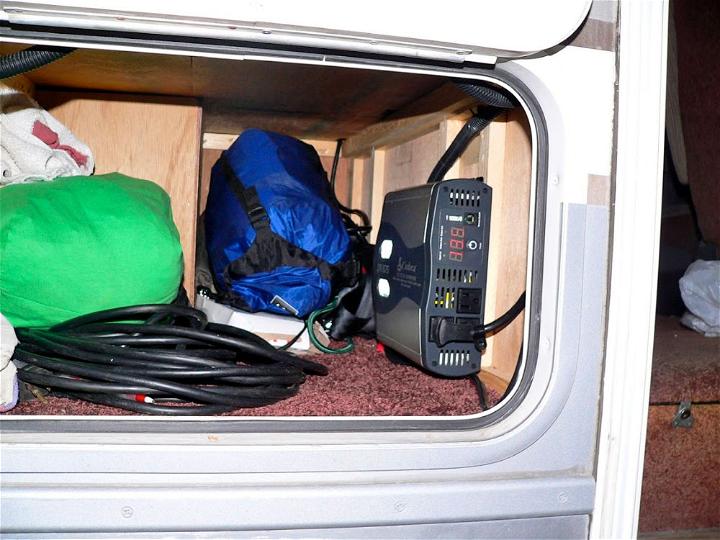
Looking to power up your RV with 120-volt service without the hassle of a generator or the need for shore power? Our Take on Freedom shares an insightful guide on installing an inverter in an RV. Learn how to convert your 12-volt battery power into a household-friendly 120 volt supply with a hands-on approach. The installation involves strategic placement to avoid corrosive gases and running wiring for optimal functionality and safety. With this helpful and engaging tutorial, gain the freedom to run your household appliances seamlessly while on the road. Discover practical tips to enhance your RV living experience today.
4. The RV Inverter Guide For Beginners
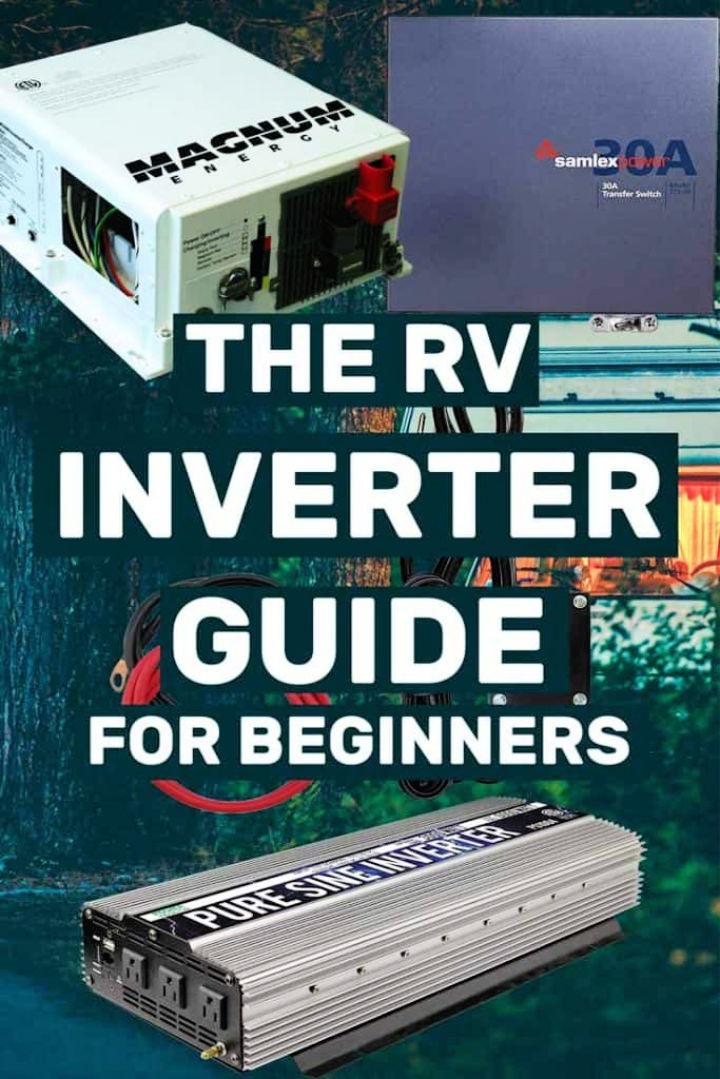
Venturing into the RV lifestyle and grappling with power needs? Vehicle HQ‘s RV Inverter Guide for Beginners, curated by expert Gary Brinck, simplifies the task of choosing and installing the right inverter for your recreational vehicle. Learn how an inverter works and the significance of selecting the proper type and size for your needs.
Whether adding new outlets or integrating into existing systems, this guide ensures you make informed decisions for off-grid convenience. Get savvy on installation nuances and alternatives like generators and solar solutions, all explained in an engaging, easy-to-follow manner.
- DIY Camper: Discover the ultimate guide for building your own DIY camper or renovating your RV. Tips, tricks, and inspiration for your next project awaits!
5. 1000 Watt Inverter Installation
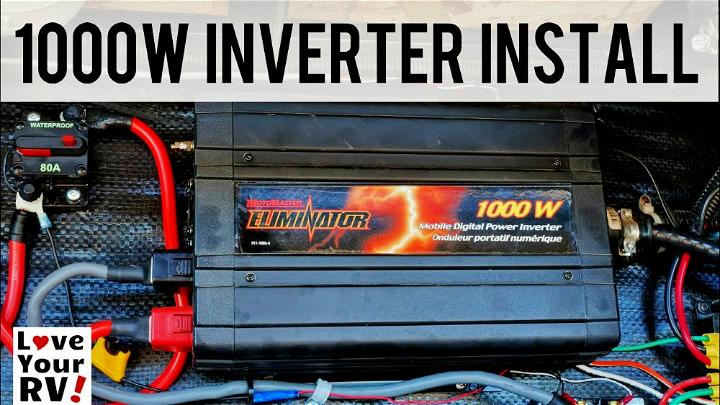
Interested in installing a 1000-watt inverter for your RV or boat? Love Your RV’s detailed YouTube guide provides an instructive walkthrough of their inverter installation process. In the video, Ray offers practical advice on choosing the right inverter, explains the importance of pure sine wave inverters for sensitive electronics, and shows how to wire the inverter for optimal performance. He also outlines various methods for connecting the inverter to your rig’s AC system.
This engaging tutorial is designed to help viewers understand the ins and outs of inverter installation, ensuring a safe and efficient power solution while on the move. Whether you aim to power up small appliances or maintain a steady energy source for your gadgets, this video is a helpful resource for anyone looking to enhance their off-grid power capabilities.
6. RV Inverter Install – Four Different DIY Methods
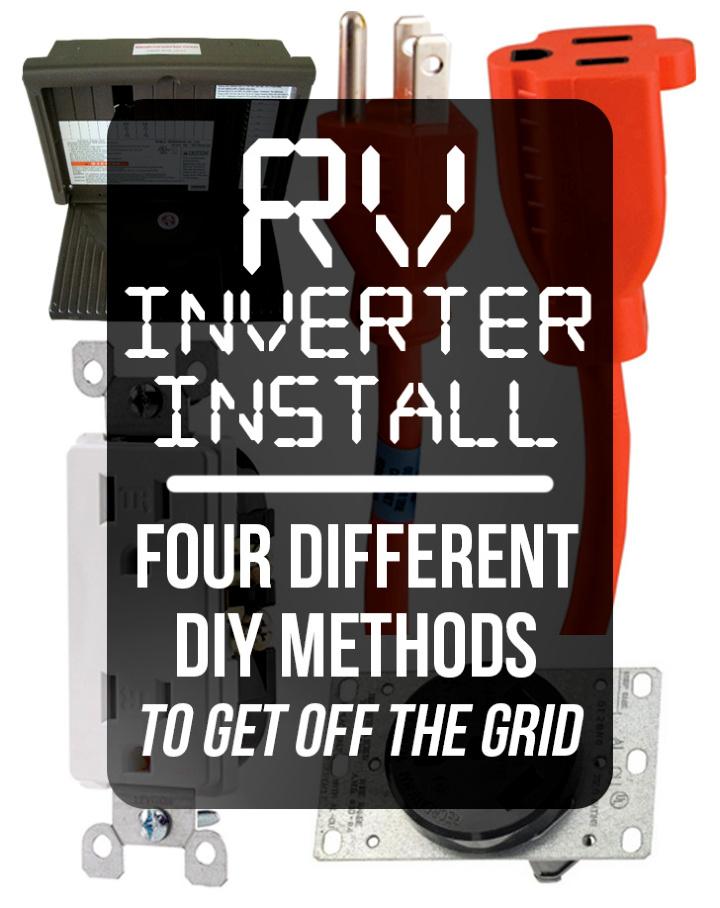
Ready to install your RV inverter and embrace off-grid adventures? Do It Yourself RV offers a comprehensive guide for a DIY inverter installation that’s both informative and approachable. With step-by-step instructions, you’ll learn how to choose the right wire gauge, avoid voltage drops, and connect your inverter to the RV’s electrical system safely. The guide includes various installation methods to suit your needs, from simple setups to more integrated solutions. Get your inverter installed correctly, power up, and start exploring with confidence and freedom.
7. How to Install a Campervan Solar Electrical System
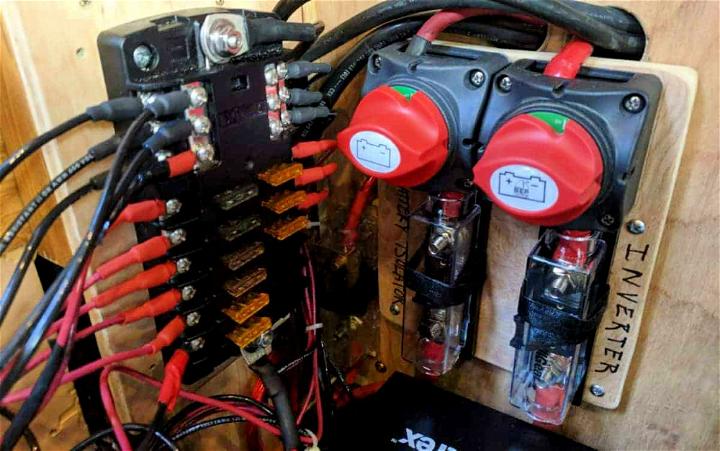
Embarking on a DIY camper van conversion? Crafting a safe and efficient electrical system is crucial, and Gnomad Home has you covered. Their comprehensive guide offers invaluable insight into designing and installing your campervan’s power setup. You’ll find detailed explanations on charge sources, battery banks, and managing your electrical loads. Plus, the guide includes handy tools like calculators, resources, recommendations, and wiring diagrams to streamline the process. With this instructive resource, you can confidently power up your van for an off-grid adventure.
8. Best 12v Inverter For a Camper Van Conversion
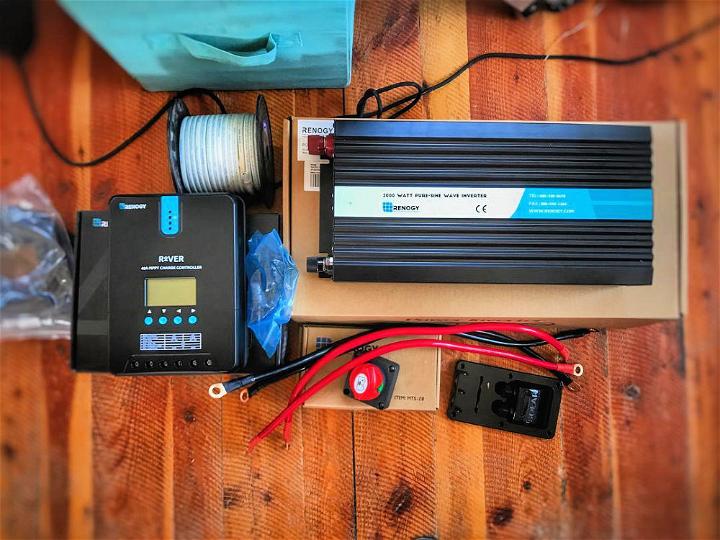
Planning a camper van conversion or living the RV lifestyle? Powering your mobile abode requires a reliable 12V inverter, and Parked In Paradise has the lowdown on the best options for your needs. Discover the difference between MSW and PSW inverters, learn how to choose the right size for your setup, and get tips on installation for optimal efficiency. Safeguard your batteries with smart power solutions, and check out top picks like the robust Novopal 100W Pure Sign Power Inverter or the budget-friendly BESTEK 300W Inverter. Equip your van or RV with the perfect inverter and keep your devices running smoothly on the go.
9. Inverter Installation
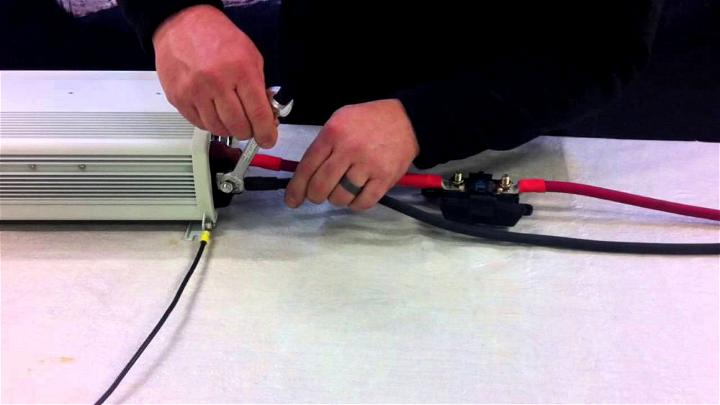
Installing an inverter is a practical way to ensure you have power when off the grid. Canadian Energy’s instructional video on YouTube simplifies the inverter installation process. It guides viewers through cable preparation, connections, and testing with clear, step-by-step instructions. Jay’s demonstration, using a 2000 watt true sine inverter, highlights the importance of correct cable sizing, secure crimps, and proper safety precautions when working with electrical components.
By watching this tutorial, DIY enthusiasts and those looking to maintain power autonomy can confidently install their inverters, ensuring they’re ready for reliable energy access whenever needed. With a focus on clear communication and attention to detail, the video ensures a thorough understanding, paving the way for a successful setup.
10. How to Install a High-Power Inverter
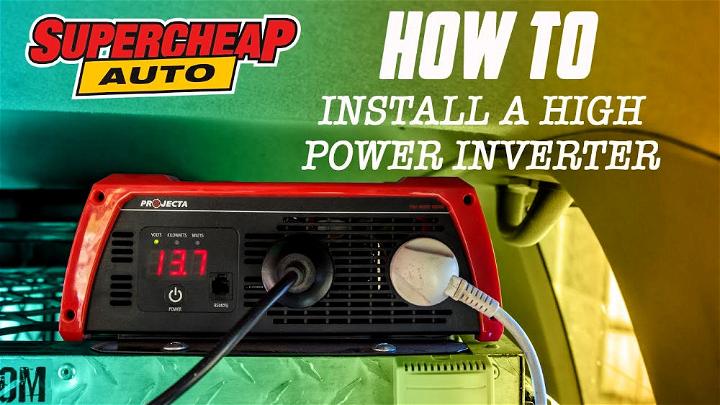
Installing a 3000-watt inverter into your truck camper can significantly enhance your off-grid capabilities, allowing you to use appliances while on the road. If you’re planning to take on this upgrade, YouTube has a detailed video guide that can assist you at every step of the process. The installation added an additional battery for increased power and running heavy-duty cables to connect the inverter safely. Proper placement and securing of the inverter are crucial, as well as safe electrical connections.
The video on YouTube walks you through the necessary precautions and demonstrates the practical benefits of having a powerful inverter in your camper. With clear visual aids, the guide helps make the installation process manageable and rewarding. Visit YouTube and search for the video titled “How to install a 3000 Watt Inverter – Details of Installation,” a comprehensive walkthrough.
Conclusion:
In conclusion, installing an inverter in your RV can greatly enhance your on-the-road experience. By following these 10 easy RV inverter installation guides, you can power your electronics and appliances efficiently. Take the time to ensure safety measures are in place, and enjoy the convenience of having electricity wherever you go. Upgrade your RV with an inverter today for a more comfortable and convenient road trip experience.
